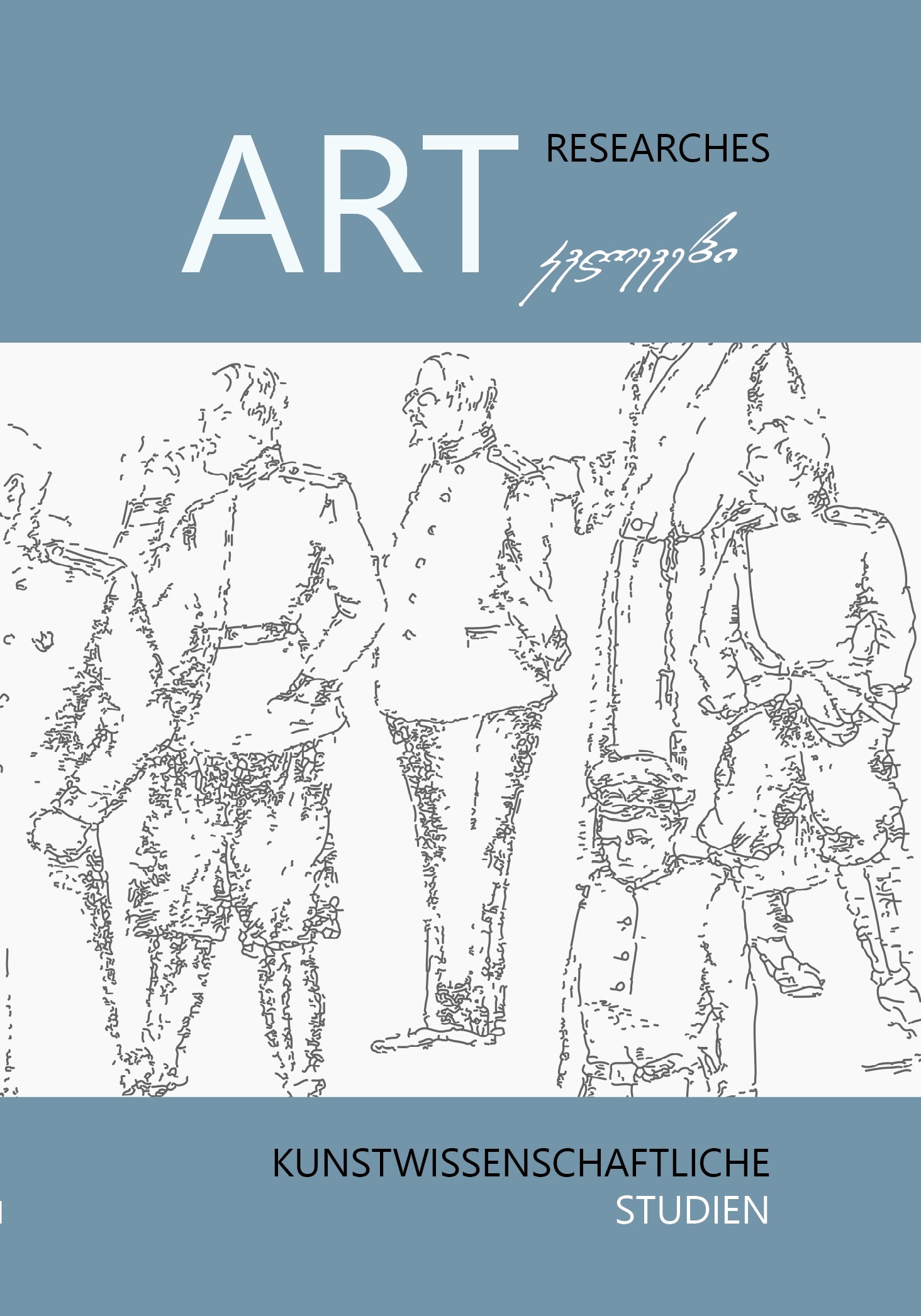კინემატოგრაფის სტრუქტურალისტური კვლევა და მეტაფორის ფილოსოფიური ასპექტი
Main Article Content
ანოტაცია
The fashionable stage of film theory, whose beginnings date back to the beginning of the 1960s, is noteworthy for the variety of different ideas and the acute discussions on these topics that lasted for decades.
In the second half of the 1950s and at the beginning of the 1960s, structuralism entered the Apron Stage / Avant-scène of philosophy. Its representatives set themselves the goal of working out a new universal method of cognition that would meet the demands and interests of modern science. The starting point in this case will be the absolutisation of language, of linguistic structures, which is considered determinant for all social factors.
The interest in researching the linguistic structure of film work emerged as early as the 1920s and 1930s. Although the structuralist approach to film research was rather restrained, and what is particularly important, this structuralist approach remained for a long time within the traditional boundaries of the artistic and aesthetic assessment of film art.
In the 1960s, interest in the structuralist analysis of film was reawakened. It was based on the achievements of linguistics, semiotics and structuralist psychoanalysis. The motto was "the truly scientific study of film theory".
Already at the beginning of the 1980s, the moment of evaluation of the twenty-year reign of structuralism in the field of semiology occurs. Film critics recognised "a tragic flaw" not only in the enthusiasm with theory, but in the limitation and weakness of structuralism's critical capacity.
Structuralism lost the opportunity to play the role of the "metatheory", the universal method of analysis of any cultural phenomenon. But this by no means meant the devaluation of this kind of analysis - one of the most successful methodological means. The representatives of the most modern directions of culturology and the representatives of both classical and contemporary art theory still use this methodology today.
Various signs of defining film language, which find their bases on the semiotic and liguistic-semiotic levels of research, do not constitute a convenient way for comparison with the content structures of thought. For this purpose, the more general - philosophical level would be the most suitable. Even more so, according to Ludwig Wittgenstein - the representative of analytic philosophy - philosophy is by no means a logical chain of opinions, calculations, unifying conclusions, but a living action or activity.
Philosophy, through its search for a clear view, thoroughly investigates linguistic activity and combats the "shadows" or "ghosts" it creates. Ludwig Wittgenstein succeeded in discovering what an important role is played in the world by all that is unspoken and unexpressed, something that cannot be spoken about. He has convinced himself that philosophy is firmly rooted in the labyrinths of language. Philosophy actually represents the special "listening" to language, the "contemplation" of its activity. It also follows the process of changing concepts.
The fundamental philosophical problems set forth in L. Wittgenstein's "Tractatus Logico-Philsophicus" are connected with logic: with the perception of the essence of logic, with the universal peculiarities of language, with its informative possibilities of cognition. When considering the correlation "world - logic" (language and cognition), L. Wittgenstein devoted a great deal of attention to the problem of delimiting what is called "clear expression", i.e. it can be represented in the form of the clear ("transparent") knowledge of the objects, which corresponds to the forms of expression characteristic of it and can be recognised differently.
For Wittgenstein's analytical way of thinking, such inennlingual mechaisms became clear, which normally lie outside of ordinary "insight". The philosopher attached great importance to the non-verbal role of consciousness. He focussed his attention on how thought orders chaos through the unobstructed intrusion of the visual form (the image), how thought reaches the goal not through what is said but through what is shown (visual).
The world is logical, its limits are the same as those of language, but not everything is comprehensible to its gestures and unambiguous rules. There is something that cannot be expressed by means of language, and it is precisely this that forms the meaning of life. It is difficult to express it, but it can be explained with the help of ethics and aesthetics, which are connected with such questions of mysticism, which are the basis of art.
The semantic, philosophical approach to aesthetics has become a fashionable tendency in recent times. According to this tendency, the best means in the "scientific" conversation about art is to use those terms and metaphors that we use in everyday language.
The mechanism of metaphor and the potential abilities it contains enable the extrapolation of concepts and their profound assessment. On this basis, the essence of metaphor, its aesthetic meaning, is not only the object of thought of those scholars who study various aspects of language. Consequently, it becomes evident that the necessity of researching the problem of metaphor should be done on the basis of film semiotics, through knowledge of the "language system", from the point of view of classical category and sense perception.
